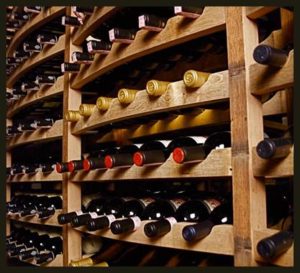 This “Industry Tip” deals with an important issue after all the hard work has been done growing the fruit, making the wine and properly bottling it. It is the proper storage of wine to make sure that all that hard work does not go to waste from poor handling of the finished product.
This “Industry Tip” deals with an important issue after all the hard work has been done growing the fruit, making the wine and properly bottling it. It is the proper storage of wine to make sure that all that hard work does not go to waste from poor handling of the finished product.
The following will give you a general overview of the key factors. Do give me some feedback on if you find this kind of information helpful and I will keep posting more (or at least click on some of the ads on this site to support my efforts ;-).
After wines are bottled in a winery, the wines will under go something called “Bottle-Shock” which will lower its aroma and taste intensity due to the severe treatment it has gone through the bottling process. The wine takes about two weeks to recover from that but it is by no means “bad” and can certainly be sold right off the bottling line as needed.
After this shock period, the wines should be stored on their sides or upside down in their cases and stacked on a movable pallet, ready for sale or shipping.
Cellaring – Aging and Storing Wine
Short-Term Aging – Under 2 Years
Most fruit wines are intended to drink now, and the goal of proper short-term storage is to prevent these wines from going bad while you wait to drink them.
For short-term storage, we list several factors to consider. The more of these you are able to follow, the more likely your wine will not go bad within two years’ time (which is the maximum target length of time that fruit wines should be sold by); and for some wines, you might notice an improvement.
- Avoid high temperatures. High temperatures will turn your wine. Try and keep your wine as close to 18-20°C as possible. Gradual and slight temperature changes should not have any bad effects on the wine unless the temperature gets too high.
- Wines should be in kept away from light.
- Keep wine resting on its side or upside down in the case to prevent the cork from shrinking or drying.
- Avoid places where there are vibrations or shaking.
Cellaring Wine for the Long Term – For Fine Wines Capable of Aging
This is for expensive wine, wines that need more aging before release to the marketplace such as some fortified wines. Basically wines of higher tannin content capable of aging and becoming a better wine over several years of time.
For long-term storage: You need constant temperature with little or no fluctuations, the proper humidity plus all the other factors of short-term storage. Most warehouses will not have the ideal conditions. If you want long-term storage you may have to either purchase climate control capabilities.
Proper Wine Storage
Cool, dark, and humid does the trick. Constant conditions are ideal for wine. Wine faces many adversaries in its fight to mature properly. Proper temperature, lighting conditions, humidity control, and movement all play a role in proper wine storage. If you plan to store wine for any amount of time, conditions need to be met in order to keep your wine safe. Storage units should ease these problems and keep your wine safe. Wine matures best as a result of consistency, as opposed to exact conditions.
Proper Temperature for Wine Storage
Wine storage can be done safely in temperatures barely above freezing up to about 20°C. Wine matures at a faster rate at higher temperatures. Between 10°-14°C and humidity between 60-70% is a superlative range in which to store wine. A constant wine storage temperature is what you should be striving for. Recurring changes in wine storage temperature can be detrimental to your wine.
High humidity levels keep moisture inside the bottle thus preventing evaporation through the cork. Humidity levels that are too high often cause microorganisms to grow, which can age your wine prematurely or even spoil your wine.
Lighting conditions and bottle size play a factor. Coloured bottles help shield the exposure of your wine from sunlight and other forms of light, which can be as damaging as changes in temperature. For proper wine storage your wine should not rely on coloured bottles alone. Store your wine in dark conditions (leave them in the cases) to keep your wine safe.
Remember also that bottle size also plays a part in storing wine. Air is an enemy of wine. Wine stored in bottles has a certain amount of air space or ullage, which is the amount of the bottle that is void of wine.
For most bottle styles, the larger the bottle the less air space per millilitre of wine, resulting in better storage conditions. Larger bottles such as magnum sized bottles age wine better and increase the lifespan of most wines. Generally, the bigger the bottle size the better the wine will age.
Limit movement with proper wine storage units or preferably keep the wine palletized in their cases until the moment before shipping out of the winery or sales to the customer.
When a wine has been lovingly made, stored properly and aged to perfection, nothing beats the sensation of a glass of fruit wine in the perfect setting!
Cheers!
